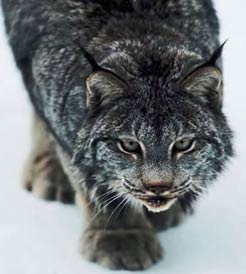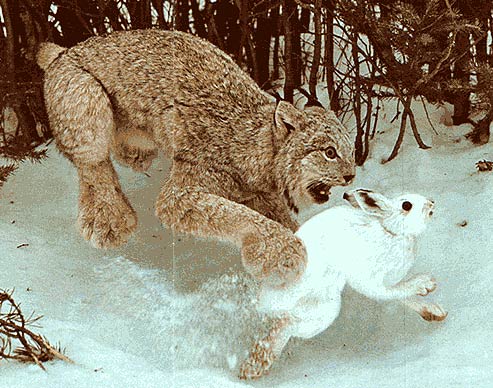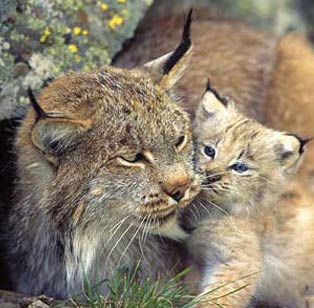Lynx – Cats with Martian Ears

There are four species of lynx: the Canada Lynx, the Eurasian Lynx, the Bobcat and the Iberian Lynx. The Iberian Lynx is the most endangered cat species in the world. If it becomes extinct, it will be the first species of cat to do so in the last 10,000 years.
Appearance
All lynxes have white fur on their bellies, the insides of their legs and their chests. They have black tufts of fur on their ears and the coat color varies between the species, and changes according to the seasons. Their tales are short and they have wide paws for walking on snow.

Iberian species
They have spots and dark bars and streaks on their coats for camouflage. The bobcat has smaller paws than the other lynx species, and is thus confined to the warmer southern regions of Canada, while the Canada Lynx is able to live in the cold snowy areas quite easily.

Canadian species
The Canada Lynx and the Bobcat are smaller than their European cousins. Lynxes that live in warmer regions have shorter, darker fur. Lynxes that live in snowy regions are generally larger, have lighter fur and much bigger paws -some have paws that are larger than a human hand.
Rabbit is on the Menu
Hares and rabbits are the preferred prey of most lynxes, particularly the Canada Lynx – they live almost exclusively on snowshoe hares. If hares and rabbits aren’t available, lynxes will feed on small mammals, birds, fish, insects and sometimes smaller livestock.

Lynx population density in a particular region, is dependent on how much food is available to them. Lynxes catch their prey by lying in wit and pouncing, or by stalking and pouncing. The Eurasian Lynx is known to prey on foxes, as is the bobcat.
The biggest threat to the lynx, is from people. Many are killed by hunters, cars and accidents from interacting with man-made environments. Larger predators do sometimes kill lynxes, such as cougars killing bobcats. These killings could also be due to territorial disputes.
Behavior and Reproduction
Lynxes are usually solitary animals, though they do hunt and travel in groups sometimes. Mothers raise kittens alone and they give birth to between two and four kittens per year. Young lynxes stay with their mothers for about nine months, before going off on their own.

Most lynx prefer densely forested regions and are good at climbing trees and even at swimming. The bobcat prefers to avoid water and is able to live in grasslands, swamplands, woodlands and on the outskirts of urban areas.
